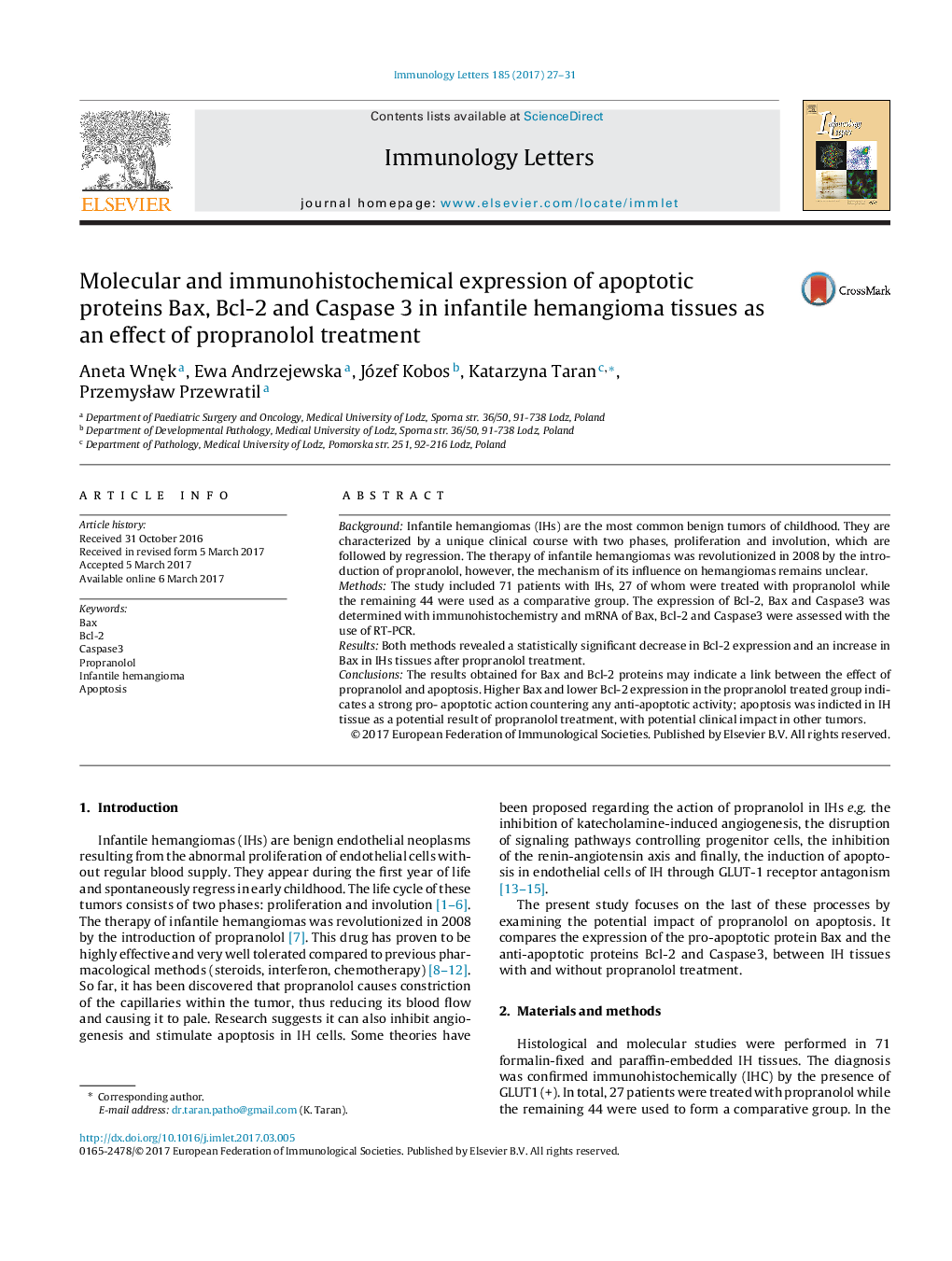| Article ID | Journal | Published Year | Pages | File Type |
|---|---|---|---|---|
| 5666736 | Immunology Letters | 2017 | 5 Pages |
â¢A mechanism for propranolol action in infantile hemangiomas which relies on changes in Bax and Bcl-2 is proposed.â¢Serum and tissue evaluation of apoptotic protein is suggested as an suitable marker for propranolol responsiveness in clinical practice.
BackgroundInfantile hemangiomas (IHs) are the most common benign tumors of childhood. They are characterized by a unique clinical course with two phases, proliferation and involution, which are followed by regression. The therapy of infantile hemangiomas was revolutionized in 2008 by the introduction of propranolol, however, the mechanism of its influence on hemangiomas remains unclear.MethodsThe study included 71 patients with IHs, 27 of whom were treated with propranolol while the remaining 44 were used as a comparative group. The expression of Bcl-2, Bax and Caspase3 was determined with immunohistochemistry and mRNA of Bax, Bcl-2 and Caspase3 were assessed with the use of RT-PCR.ResultsBoth methods revealed a statistically significant decrease in Bcl-2 expression and an increase in Bax in IHs tissues after propranolol treatment.ConclusionsThe results obtained for Bax and Bcl-2 proteins may indicate a link between the effect of propranolol and apoptosis. Higher Bax and lower Bcl-2 expression in the propranolol treated group indicates a strong pro- apoptotic action countering any anti-apoptotic activity; apoptosis was indicted in IH tissue as a potential result of propranolol treatment, with potential clinical impact in other tumors.
